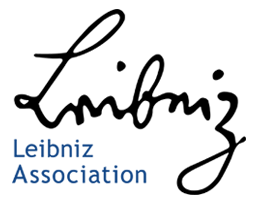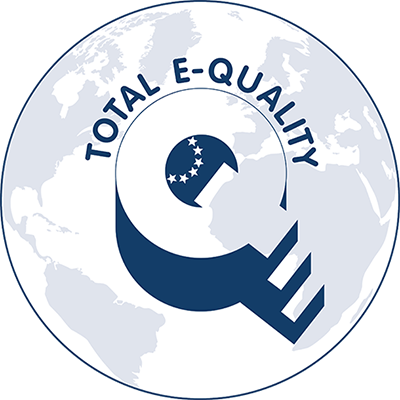2024
New plasma printing technology from INP receives DATIpilot funding
Greifswald, 16 April 2024
A new plasma printing technology from the Leibniz Institute for Plasma Science and Technology (INP) in Greifswald, Germany enables the precise modification of surfaces at extremely small scale. INP researcher Laura Barillas-Mora has received funding for the further development of the plasma source that is used in the system, from the DATIpilot innovation programme of the German Federal Ministry of Education and Research (BMBF).
The new plasma printing process enables materials such as metals, polymers, fibres and paper to be coated with thin layers, with a feature size as small as 40 micrometres - about the thickness of a human hair. The properties of these layers can be precisely tailored, for example in terms of their thickness or chemical composition. Moreover, the new plasma printing process can realise diverse operations, including surface activation, functionalisation, chemical structuring, fine cleaning and the removal of layers. This opens up a wide range of potential applications, including in medical technology, biochips, electronics, materials development, optics, photonics, and MEMS (microelectromechanical systems).
The technology developed at INP offers numerous advantages. The direct application of layers without the use of masks or templates saves time and simplifies production processes. This is particularly important in areas such as microfabrication, life sciences and printed electronics. The technology is also more environmentally friendly, using significantly less energy and materials than conventional methods.
Funding for an industrial prototype
"Our plasma printing technology makes it possible to precisely modify surfaces without masks. This allows companies to optimise their production processes and work in a more environmentally friendly way," explains Laura Barillas-Mora, a researcher at INP. "Thanks to the DATIpilot funding, we can now further develop the heart of the technology: the micro atmospheric pressure plasma source, which has been successfully tested in the laboratory, into an industrial prototype".
The project to be funded at the INP is called “Mikro-APPS: Development and Transfer of a Micro Atmospheric Pressure Plasma Source”. As part of the DATIpilot programme, the BMBF is funding an "innovation sprint". With a budget of €150,000 and a duration of 18 months, the first industrial prototype and further testing and validation of the plasma source can now be carried out at the INP. Laura Barillas-Mora, project manager at INP, explains: "Our focus is now on developing an industrial design, particularly in the area of user interface, electronic control and required certifications. We are also looking for industrial partners to test and use our plasma source and plasma printing systems in industrial environments.”
Laura Barillas-Mora is planning a spin-off from INP to commercialise the technology. Under the name MicroQuasar Technologies, the plasma printing process will enable more environmentally friendly production processes in a wide range of areas in the future, as well as the possibility to use the plasma source for other applications beyond surface treatment.
About DATIpilot
In July 2023, the Federal Ministry of Education and Research (BMBF) published the DATIpilot funding programme, consisting of two modules: Innovation Sprints (Module 1) and Innovation Communities (Module 2). The DATIpilot aims to simplify and accelerate funding processes. Additionally, it serves as a field for experimentation and provides learnings and ideas for the German Agency for Transfer and Innovation (DATI), which is currently being set up.
A total of 300 Innovation Sprints are being funded. At the DATIpilot roadshow between November 2023 and February 2024, nearly 600 projects presented their ideas in five-minute pitches. At each of the 23 events, the participants themselves peer-voted which projects should receive funding. In this way, 153 Innovation Sprints have been funded. For all the other participants, there was a second chance in the lottery, where a further 147 projects were drawn.
The projects address a wide range of topics: The focus is on AI/machine learning, medical technology/pharmaceuticals and healthcare and social services. Around 20 percent of the projects focus on social innovations.
Further information
Leibniz Institute for Plasma Science and Technology (INP)
Stefan Gerhardt // Communication Department
Phone: +49 3834 554 3903 // stefan.gerhardtinp-greifswaldde
Felix-Hausdorff-Strasse 2 // 17489 Greifswald // https://www.inp-greifswald.de/en/
INP develops environmentally friendly alternative to PFAS-based coatings
Greifswald, February 20, 2024
The Leibniz Institute for Plasma Science and Technology (INP) in Greifswald, Germany has developed a new method for the production of ultra-hydrophobic organosilicon polymer coatings. These coatings are an alternative to per- and polyfluorinated compounds (PFAS), which are still used in many industrial applications and sectors.
PFAS compounds have been used for decades to enhance a wide range of products, including those in the medical, semiconductor and textile industries. They are extremely water-repellent and therefore have a number of advantages, such as good non-stick properties and high chemical resistance. However, due to their high stability, PFAS compounds can accumulate in the environment and in living organisms, which is why they are also known as "eternal chemicals". They are therefore considered harmful to the environment and human health and have been banned in some applications in the EU since 2006.
All perfluorinated and polyfluorinated compounds are expected to be included in the global ban list of the Stockholm Convention by 2025 at the latest. This poses an enormous challenge to future high-tech industries such as medical and semiconductor, which rely on these established ultra-hydrophobic coatings.
The organosilicon polymer coating recently developed by INP is based on plasma technology and is a promising and environmentally friendly alternative to PFAS-containing coatings. It is mechanically and chemically stable, up to 200 nm thick and opaque, storable, washable and reproducible. The coatings can be applied to many materials, including metals, plastics and semiconductors.
These properties, together with the fact that they can be applied to thermolabile plastics, make organosilicon polymer coatings ideal for medical device finishing. For example, it can be used in the manufacture or surface modification of implantable devices such as pacemakers or artificial joints.
The INP is currently working on transferring the low-pressure process for depositing the organosilicon polymer layer to a normal pressure process. Concepts for scaling up the technology are also being developed.
"We are very pleased with the results of our research," says Dr Frank Hempel, Head of the Plasma Surface Technology Department at INP. "The organosilicon polymer layer is a promising alternative to PFAS-containing layers and offers a wide range of possibilities for applications in various industrial sectors."
Further information
Leibniz Institute for Plasma Science and Technology e.V. (INP)
Stefan Gerhardt // Communication Department
Phone: +49 3834 554 3903 // stefan.gerhardtinp-greifswaldde
Felix-Hausdorff-Straße 2 // 17489 Greifswald // www.leibniz-inp.de/en



































